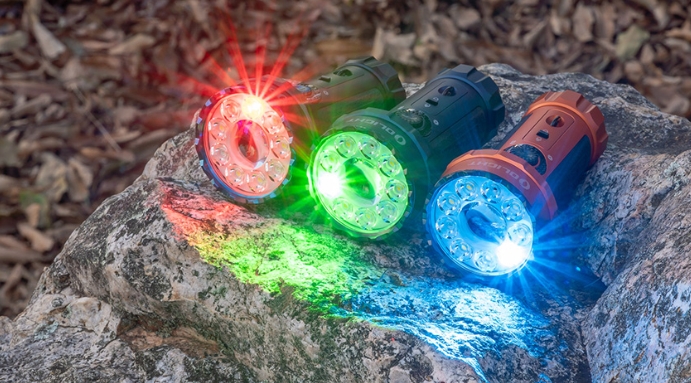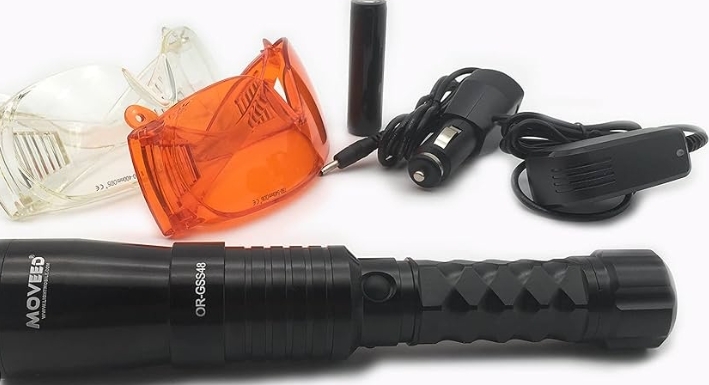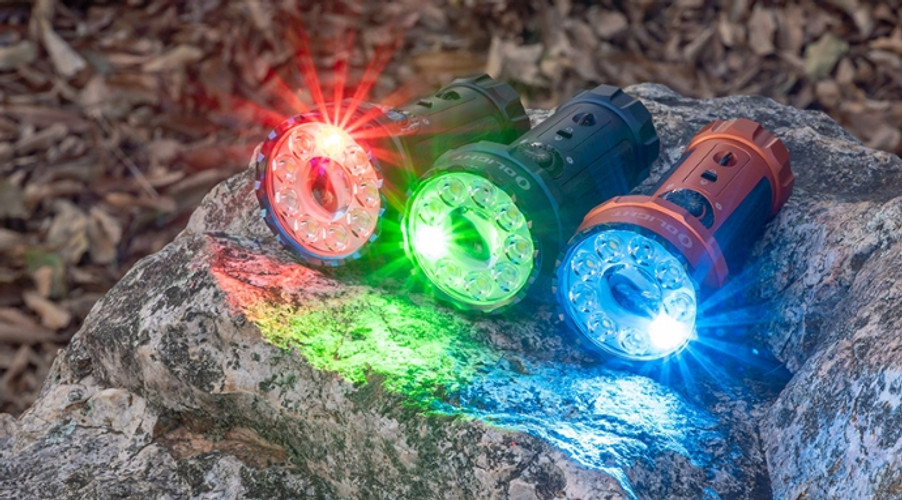Forensic Flashlight Buying Guide: What to Look For?
Posted by Raymond on 17th Mar 2025
Forensic flashlights are essential tools for crime scene investigators, forensic professionals, and law enforcement agencies. They are specially designed to reveal hidden evidence such as bodily fluids, fingerprints, and trace materials that are invisible to the naked eye. In this Forensic Flashlight Buying Guide, we’ll cover what you need to consider when choosing the right forensic flashlight for your needs.
1. Key Features of Forensic Flashlights
When selecting a forensic flashlight, it’s important to focus on specific features that will enhance your investigative efforts. Below are the most critical aspects to keep in mind:
| Feature | Importance |
|---|---|
| Wavelength Options | Forensic flashlights come in multiple wavelengths, including UV (365nm), blue (450nm), and green (525nm). Different wavelengths are used to detect various types of evidence. |
| Beam Intensity (Lumens) | A flashlight with a higher lumen count will be brighter and more effective in dark environments, helping investigators spot evidence more easily. |
| Battery Life | Long battery life is essential for field use. Rechargeable batteries or long-lasting standard batteries are key considerations. |
| Portability & Design | Flashlights should be compact and lightweight for easy carrying around crime scenes. Look for ergonomic designs that are comfortable to hold. |
| Durability & Waterproofing | A high-quality forensic flashlight should be durable enough to withstand drops and tough environments. An IPX7 rating ensures the flashlight is waterproof for outdoor use. |
| Optical Filters | Many forensic flashlights come with optical filters that help block background light and enhance the visibility of specific types of evidence. |
2. Types of Forensic Flashlights
Forensic flashlights can vary in terms of light source, beam quality, and specific functionality. Here's a breakdown of the most common types of forensic flashlights:
1. UV Flashlights (Ultraviolet Light)
- Wavelength: Typically 365nm (UV-A)
- Use: Detects bodily fluids like blood, semen, urine, and saliva. It can also be used for counterfeit detection, spotting fibers, and highlighting certain drugs.
- Best for: Detecting biological evidence at crime scenes, such as blood stains or fingerprints.
2. Blue and Green Flashlights

- Wavelength: 450nm (Blue), 525nm (Green)
- Use: These wavelengths are ideal for detecting latent fingerprints on various surfaces, trace evidence (hair, fibers), and other subtle clues.
- Best for: Fingerprint detection and revealing trace evidence.
3. Multi-Spectrum Flashlights
- Wavelength: Multiple wavelengths, typically ranging from UV (365nm) to visible light (450nm, 525nm, etc.).
- Use: A versatile tool that can detect various types of evidence across different surfaces. Multi-spectrum flashlights are suitable for crime scenes that may have different types of evidence.
- Best for: Investigators who need a flashlight that can handle multiple forensic applications.
3. Best Forensic Flashlights in 2025: A Comparison
Here’s a comparison table featuring some of the top forensic flashlights available in 2025, highlighting their key features:
| Flashlight Model | Wavelengths | Best For | Battery Type | Portability | Price Range |
|---|---|---|---|---|---|
| TANK007 CI02 Combo | 365nm (UV), 8 LED Colors | All-purpose forensic investigations | Rechargeable | ✅ Compact | $$$ |
| Streamlight 85100 Stylus Pro UV | 365nm (UV) | Quick scans for biological fluids | AAA Batteries | ✅ Ultra-portable | $$ |
| Forensics Source KrimeSite Imager | 450nm & 525nm | Fingerprint and trace evidence | Rechargeable | ✅ Medium-size | $$$$ |
| SureFire M6 Guardian | 365nm UV, 475nm, 520nm | All-purpose crime scene investigations | Rechargeable | ✅ Portable | $$$$$ |
4. Key Considerations Before Purchasing a Forensic Flashlight

Before making your final decision, there are some important factors you should consider:
a. Purpose of Use
- General Forensic Investigations: If you are investigating various types of evidence, multi-spectrum flashlights like the TANK007 CI02 Combo are ideal because they offer versatility with multiple wavelengths.
- Fingerprint Detection: If fingerprint analysis is your main concern, a flashlight with blue or green light wavelengths like the Forensics Source KrimeSite Imager is best suited.
- Field Use: If you need a lightweight, portable flashlight for quick inspections, then a flashlight like the Streamlight 85100 Stylus Pro UV may be a better fit.
b. Durability and Waterproofing
- Forensic flashlights are often used in harsh environments, so it’s essential to choose a flashlight that is waterproof and can withstand drops. Look for models with an IPX7 rating or higher to ensure reliable performance in all weather conditions.
c. Battery Life
- Flashlights with rechargeable batteries are typically the best choice for long-term field use, as they offer longer runtimes and are more cost-effective over time compared to disposable batteries. However, if you need something compact and lightweight for quick use, a flashlight with standard batteries might be more convenient.
d. Size and Portability
- Forensics teams often work in tight or cramped spaces, so the portability and ergonomic design of a flashlight are essential. A flashlight should be easy to handle and carry around for long hours, which is why most modern flashlights have lightweight, compact designs.
5. Conclusion
Choosing the right forensic flashlight is crucial for crime scene investigation and forensic analysis. With advanced features like multiple wavelengths, powerful beams, and long battery life, the best forensic flashlights in 2025 are designed to help detect hidden evidence quickly and efficiently.
Recommended Forensic Flashlight:
For those looking for a highly versatile, all-in-one forensic flashlight, we highly recommend the TANK007 CI02 Combo, which offers 8 LED colors, 365nm UV light, and a rechargeable design that meets the needs of all forensic professionals.
? Get the TANK007 CI02 Combo Here
Whether you are a crime scene investigator, a forensic scientist, or law enforcement, this buying guide will help you make an informed decision when purchasing the best forensic flashlight for your investigative needs in 2025.

